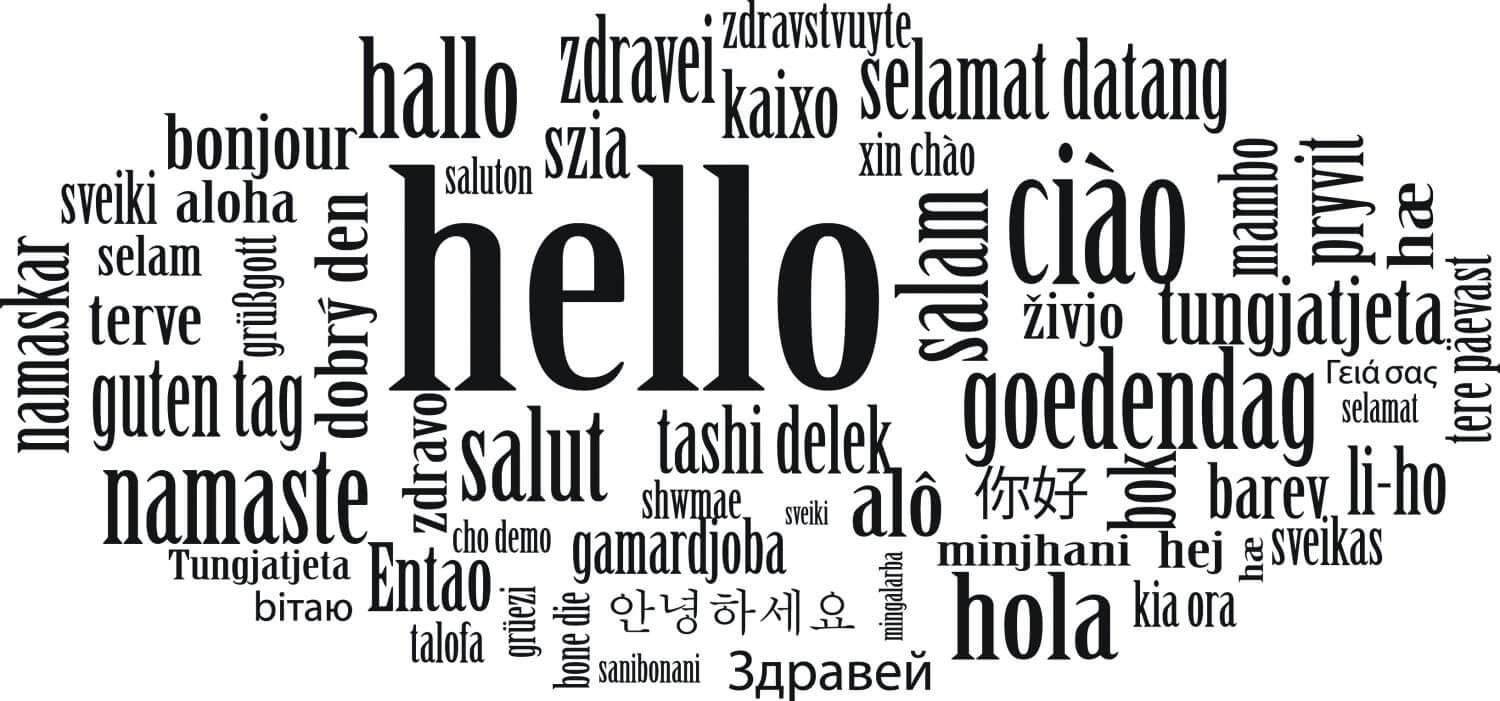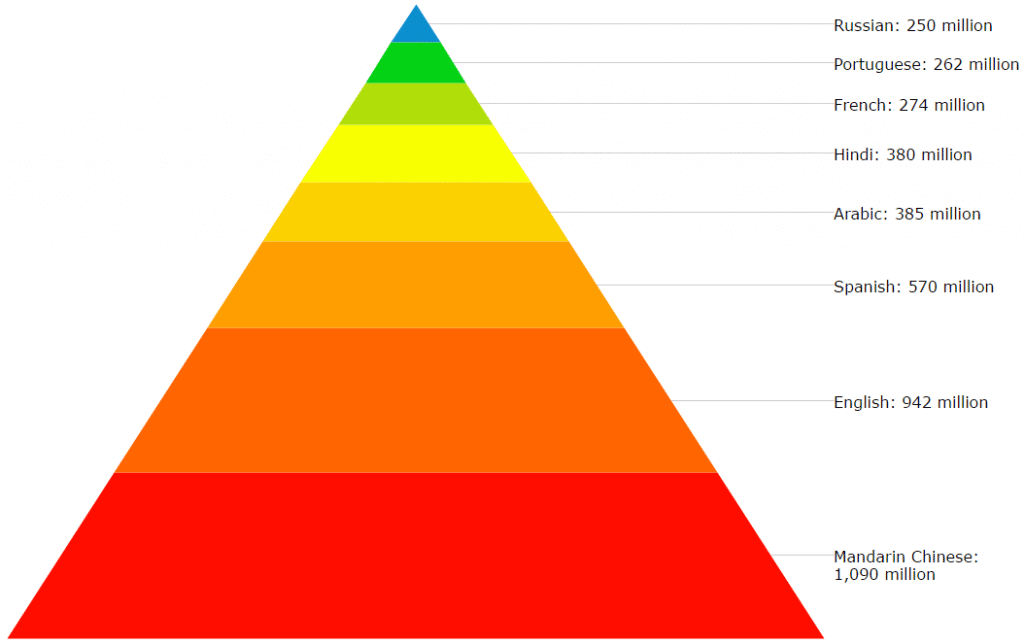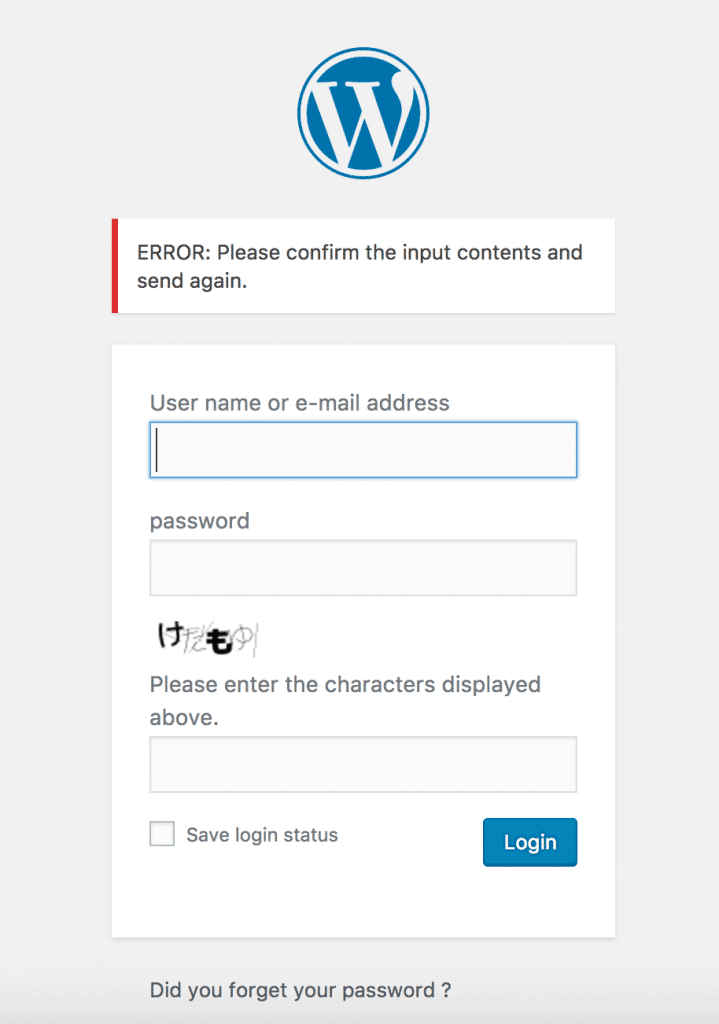A Multilingual WordPress Website is able to provide content in more than one language, ideally without compromising the consistency, speed and structure of the content. It can be English, German, Russian, Chinese or any language that is spoken by your target audience.
Why you might need a multilingual website
Have you ever tried to search for something in Korean, Turkish, Chinese or French? I’m guessing not – and why not? Well, it’s hard to search for or read something in a language you don’t know.
The fact is that the majority of web users nearly always prefer to browse and search in their native languages and even though English is one of the most widely understood languages in the world, there are huge pockets of potential users that may not feel comfortable making thorough searches in another language.
It’s not that hard to imagine when you look at the most widely spoken languages in the world. Just add the numbers and you can see your potential blind spot:
Just looking at this list, you may be missing out on 3,200,000,000 people. Yikes!
Here’s where you have to stop and consider whether having a multilingual site will make a difference for your business and outreach. You’re always looking for different opportunities to grow your business and put the work in to roll out your social media, marketing and advertising strategies. But if you don’t have a multilingual website, you may potentially be turning your website away from a large group of prospective customers.
Do you even need a multilingual website?
To answer this question, you should first define where your target audience is and what the dominant language used is. A simple way to figure this out is by simply asking yourself, “where do my current and potential customers live?”
For many of you, this can include 2+ languages even if you’re reaching out to your local community. In this case, don’t get overwhelmed at the prospect of having to build 2+ completely different versions of your websites.
Important points to consider for a Multilingual WordPress website
Check your contact information twice before publishing it onto your website
Easy to overlook, but make sure your phone number is country code friendly! Your phone number should contain the country code prefix so that regardless of what country your customer is in, they’re able to connect with you directly. This can also be applied for company addresses; not everyone may be familiar with the format of addresses in your home country.
Make sure to include zip codes, state names, P.O. Box numbers, and suite or apartment numbers written out in full and avoid using abbreviations like ‘apt.’ or ‘st.’. Take it from someone who’s not American, hardly any of us know what AL, CA or CT stands for!
Alphabetic & Native
So you may have already guessed that you should list the available languages alphabetically on your website, but a mistake many people make is to alphabetize languages in your language. Make sure to alphabetize languages using the name of that language in that language. Not sure what I mean? German in German is ‘Deutsch’, Spanish in Spanish is ‘Español’ and Chinese in Chinese is ‘中文’- you get the point.
Not all fonts and languages play well together
Carefully consider your font choice and make sure that your fonts contain all the characters and glyphs that you need, especially for non-Latin based languages. For example, fonts such as “Helvetica” will not look same when you add Japanese, Chinese, Korean or Arabic words in it. This takes some tinkering around and there are many resources that can help guide you in finding the perfect font for each respective language on your site.
Languages in all directions
Right to left, left to right and top to bottom, languages are open to different direction. Whereas English and Spanish may be written left to right, languages such as Arabic, Hebrew and Farsi go from right to left. Other languages like Chinese and Japanese are read from top to bottom. Here you can look over different ways to be able to manage these variables to create multilingual, multi-directional content on your websites.
Translating money
Having a multilingual website may also go hand in hand with different currencies. If your visitors are purchasing your products or services from countries that use different currencies, make sure to take this into account in your written content. So often translated websites will depict $ signs to € or in the local currency, without changing the number. Obviously, that’s not right and will end up in a very confused and annoyed customer. Stay one step ahead of your customers and use a tool that will convert the prices of your target audience.
Make sure your Captcha is correct!
While using form validators, make sure you’re using a captcha in the same language as the page content. If your page is in French, your captcha needs to be in French. If your page is in Arabic, your captcha needs to be in Arabic. Just imagine having to pass a Japanese captcha to log into website as an English speaker!
Serve up the same content regardless of the language
It’s so often that I see multilingual websites not being consistent with the information they provide on one version of their site compared to the other version. It’s certainly not beneficial for you to inform your English speakers of your promotions and discounts but not your Spanish speakers!
Keeping both versions and content consistent and informative with every update of your website may be more time-consuming at first, but it will definitely increase your conversions and user engagement.
Provide the same support in all languages!
I’m not sure why (I don’t want to point to plain old laziness), but I often encounter multilingual websites that don’t offer the same level of support for all of their users regardless of the language used. If you’ve got a website offered in English, Chinese and German then wouldn’t it make sense to provide contact forms, phone numbers and access to customer support in each of those languages? Anything less will leave pockets of your customers frustrated and neglected, especially when they see that you only provide support in English rather than other languages that you present in your website.
What to avoid in a multilingual site
Don’t settle for a cheap translation tool
Getting a translated version of your content may result in a bill that makes you cringe, but getting a poorly translated and incoherent site is even more costly. You may be tempted to use a free translating tool but if you’ve ever tried to translate more than a simple sentence in any one of them, you know you’ll compromise the meaning completely. Sure, your visitors will get the general idea of your website content, but the unprofessional quality of the written content will be a big turn off for leads and conversions.
Don’t use flags to represent languages
Flags represent countries, not languages. A country can have more than one or even no official languages (i.e. Switzerland, UK & even the USA). Then there’s the fact that one language can be the official language of several countries (i.e. Austria and Germany). Now given the assumption that not everyone may be familiar with every country’s flag, visitors might not recognize the flag that you put to represent that language which isn’t helpful.
The impact of connecting with customers in their language
If any of you have ever visited or lived in a foreign country, as fun and challenging as it is to hear and learn different languages, there’s an undeniably comforting relief to hear your own language in a sea of miscommunication and miming. Especially when we’re trying to complete a task, make a purchase or browse information, it’s a great gift to give your customers that will win their trust, appreciation and satisfaction.
If your audience is made up of individuals representing different languages, putting forth the work toward creating a well-done multilingual WordPress website will create an awareness of your brand, product or service as being extremely inclusive and accommodating.








No comment yet, add your voice below!